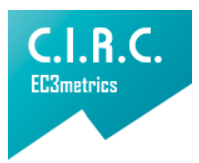Technological innovation of a multi-sensory room for disability with free software
Innovación tecnológica de un aula multisensorial para discapacidad con herramientas informáticas libres
Main Article Content
New technologies are increasingly used in therapeutic interventions for people with disabilities.These kinds of technologies include tools like free software for
visual, auditory, motor, cognitive and communication disabilities. Furthermore, multisensory rooms are environments where the senses of a patient are deeply stimulated and also providing benefits such as feelings of wellness, relaxation and security for users. Some studies in people with autism show that, apparently, the use of multi-sensory environments is more effective in improving social behaviors than in improving aggressive and stereotyped behaviors. In order to unify the benefits offered by the use of free software with the use of multisensory environments, an institution dedicated to the care of people with cognitive disabilities was proposed endow a multisensory room with free software tools for cognitive and communication disabilities. This paper presents the experiences of this proposal. Although further studies are needed to determine if there are measurable changes in patients, the institution’s therapists notice positive changes in the patients who have been included in this kind of therapeutic intervention.
Downloads
Publication Facts
Reviewer profiles N/A
Author statements
Indexed in
- Academic society
- Bogotá: Corporación Universitaria Iberoamericana
- Publisher
- Bogotá: Corporación Universitaria Iberoamericana
Article Details
AbleData. (n.d.). Assistive Technology Products,News, Resources. Recuperado en Abril 03, 2014,Disponible en: http://www.abledata.com
ARASAAC. (n.d.). Portal Aragonés de la ComunicaciónAumentativa y Alternativa. Recuperado en Abril 09, 2014, Disponible en: http://www.catedu.es/arasaac/AraWord.(n.d.). Procesador de textos con pictogramas. Recuperado en Abril 12,2014, Disponible en: http://www.proyectotico.com/wiki/index.php/AraWord
Bouncy Balls. (n.d.). Bounce balls with your mouse or microphone. Recuperado en Marzo 17, 2014,Disponible en: http://neave.com/bouncy-balls/
Castellano, R., & Sánchez, R. (2011). Laptop, andamiaje para Educación Especial. UNESCO. Recuperado en Marzo 10, 2014, Disponible en: http://www.unesco.org.uy/ci/fileadmin/comunicacion-informacion/Laptop_andamiaje_Edu_Especial.pdf
Chan, S., Fung, M. Y., Tong, C. W., & Thompson, D.(2005). The clinical effectiveness of a multisensory therapy on clients with developmental disability.Research in Developmental Disabilities,26(2), 131–42. doi:10.1016/j.ridd.2004.02.002
Colciencias. (2011). Convocatoria Inserción de Doctores a Empresas en Colombia. Recuperado en Abril 13, 2014, Disponible en: http://www.colciencias.gov.co/node/2287?ref=rpid-dibunal
Gómez, M. C. (2009). Aulas multisensoriales en educación especial, estimulación e integración sensorial en espacios snoezelen. Vigo: EditorialIdeas propias.Fava, L., & Strauss, K. (2010). Multi-sensory rooms: comparing effects of the Snoezelen and the Stimulus Preference environmenton the behavior of adults with profound mental retardation. Research in DevelopmentalDisabilities, 31(1), 160–71. doi:10.1016/j.ridd.2009.08.006
Fundación Cedesnid. (1978). Recuperado en Marzo14, 2014, Disponible en: http://cedesnid.org.co/
García, V. (2007). Programa de estimulación multisensorial.Recuperado en Abril 23, 2014, Disponible en: http://www.cpraviles.com/materiales/ProgramaEstimulacionMultisensorial/html/paginamarco.htm
GrEP. (n.d.). Phon-Cat & Phon-Esp - GrEP Grupo de Estudios de Prosodia, Universitat Pompeu Fabra.Recuperado en Febrero 10, 2014, Disponible en:http://prosodia.upf.edu/phon/es/index.html
Hotz, G. A., Castelblanco, A., Lara, I. M., Weiss, A.D., Duncan, R., & Kuluz, J. W. (2006). Snoezelen:a controlled multi-sensory stimulation therapy for children recovering from severe brain injury. Brain Injury : [BI], 20(8), 879–88.doi:10.1080/02699050600832635
Imagination. (n.d.). Play with beautiful wavy lines.Recuperado en Enero 22, 2014, Disponible en:http://neave.com/imagination/
Lagares, J. (n.d.). Projecte FRESSA 2013. Recuperadoen Abril 05, 2014, Disponible en: http://www.xtec.cat/~jlagares/f2kesp.htm
Lazaro, A. (2002). Aulas Multisensoriales y de Psicomotricidad.(MIRA, Ed.) (p. 208). Zaragoza(Spain).
McKee, S. A., Harris, G. T., Rice, M. E., & Silk, L.(2007). Effects of a Snoezelen room on the behaviorof three autistic clients. Research in DevelopmentalDisabilities, 28(3), 304–16. doi:10.1016/j.ridd.2006.04.001
Processing. (2001). A programming language, developmentenvironment, and online community. Recuperadoen Abril 15, 2014, Disponible en: http://www.processing.org/
Rodríguez, W. R. (2014). PreLingua. Herramienta gratuita para terapia de voz. Recuperado en Marzo10, 2014, Disponible en: http://www.cedesnid.
org.co/prelingua/index.php/whats-pl
Rodríguez, W. R., Saz, O., & Lleida, E. (2012). A prelingualtool for the education of altered voices.Speech Communication, 54(5), 583–600.
Sánchez, R. (2002). Ordenador y Discapacidad (2nded., p. 486). CEPE, S.L.
Saz, O. (2009). On Line Personalization and Adaptation to Disorders and Variations of Speech on Automatic Speech Recognition Systems. Universidadde Zaragoza.
SEN. (n.d.). Accessible software for students with profound and multiple learning difficulties. Recuperado en Abril 07, 2014, Disponible en: http://www.northerngrid.org/content/senswitcher/index.htm
Sirkkola, M., Päivi, V., & Ala-Opas, T. (2008). Interdisciplinaryapproach to multisensory work. Localdefinitions and developmental projects (p. 93). Hä-meenlinna: Hamk University of Applied Sciences.
Soundbeam. (n.d.). The Invisible Expanding Keyboard In Space. Recuperado en Marzo 23, 2014,Disponible en: http://www.soundbeam.co.uk/Tico. (n.d.). Tableros interactivos de comunicacion.Recuperado en Marzo 22, 2014, Disponible en:http://www.proyectotico.com/wiki/index.php/Inicio Unizar. (n.d.). Vocaliza - Proyecto comunica. Recuperadoen Abril 13, 2014, Disponible en: http://dihana.cps.unizar.es/~alborada/informacion.html












